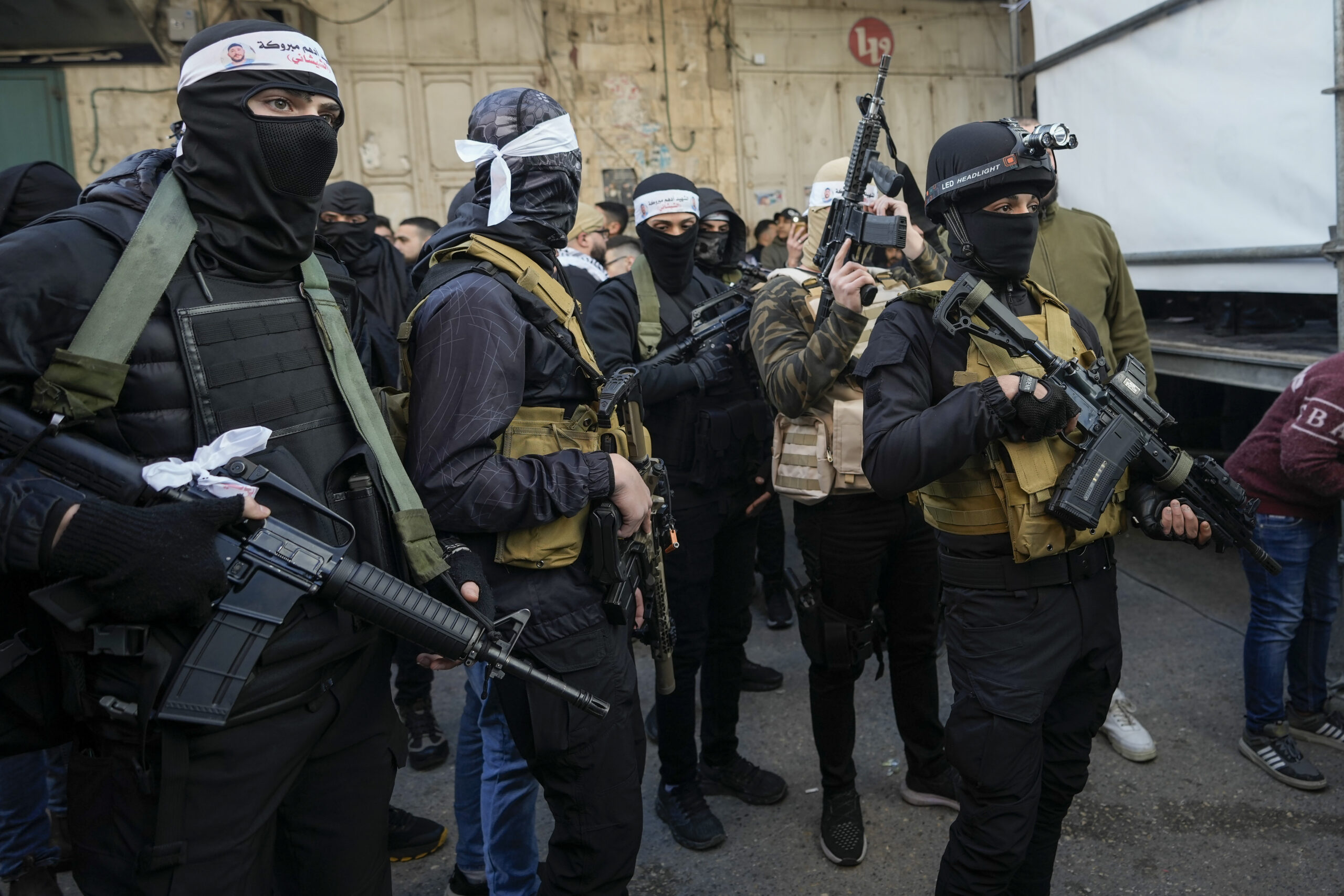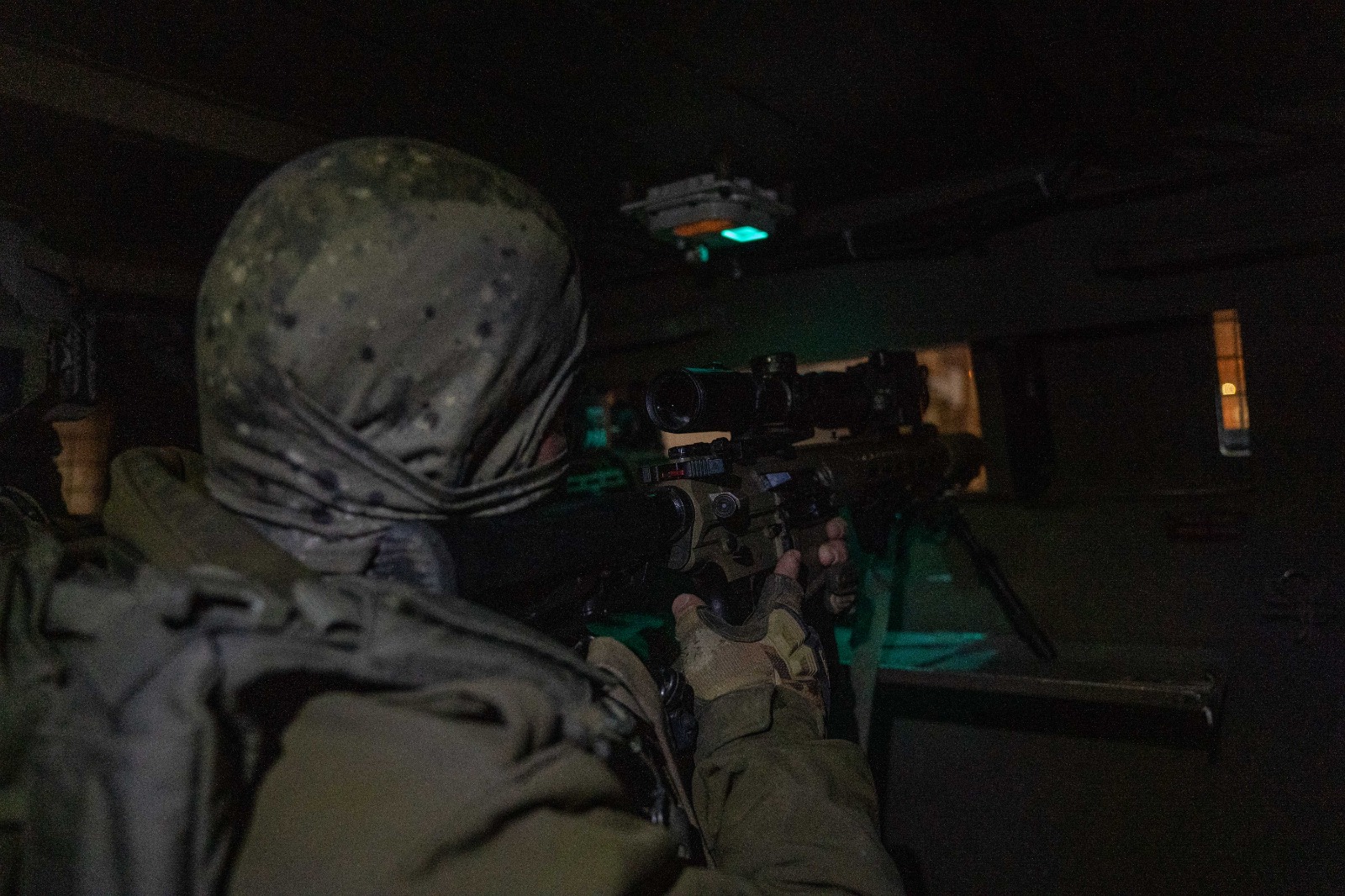A video that looks like it is right out of a dystopian science fiction movie has surfaced. It shows security camera footage of a small drone eerily floating down an empty city street and entering a building’s front door. An explosion shortly follows. The video highlights how drones optimized for urban environments and capable of maneuvering in tight spaces are becoming an increasing fixture in modern warfare.
The clip was shared on Twitter by Joe Truzman, a research analyst at the Foundation for Defense of Democracies, who stated in his post that the footage was likely of “a drone used by Israeli security forces to scout a position in the West Bank (likely Nablus).” As noted earlier, the video appears to have been recorded by a security camera and shows the unspecified drone as it makes its way down a street, hovering outside a building, before entering through its open doorway. Seconds later something seems to detonate from inside the building and the video ends.
It isn’t clear if this was the drone detonating a deadly or less-than-lethal payload, someone inside the building setting off an explosive, the drone hitting a booby trap, or some other action.
“I can’t tell you if it was attacking someone, I can’t say, but I’ve never seen a video like this,” said Truzman to The War Zone after we reached out for more information about the clip. “Israeli Defense Forces and Israeli security forces do use drones, especially in the West Bank. There is video of it, but not like this where an explosion occurs. I’ve seen them get shot down. I’ve seen them observing militant activity, but not like this.”
While there has been no confirmation on the exact kind of drone being used in the footage, the device looks similar to Elbit Systems of Israel’s recently announced LANIUS search-and-attack drone or a small system generally like it. LANIUS was first announced last November, which readers of The War Zone can learn about in detail here. It’s a small 2.75-pound quadcopter that is based on racing drones, giving it the capability to agilely fly into fortified hard-to-access urban areas for intelligence gathering and even kill missions.
Along with its visual sensors and artificial intelligence-powered mapping abilities, LANIUS can also come equipped with an unspecified lethal payload that Elbit says can be used to kill enemies and clear blocked openings. Additional details about the drone’s warhead payload are thin. As noted in our previous article on LANIUS, however, it is very likely that the drone just flies near its target and detonates, but whether this is a directional explosion or not is unclear.

Truzman explained that while he can’t confirm the official source of the video or which drone is being used, the activities recorded would line up with ongoing tensions in the area, which are just the latest chapter in one of the world’s highest profile and longest standing disputes. The West Bank, along with East Jerusalem and the Gaza Strip, are all areas steeped in historic territorial conflict that stems from competing claims to the Holy Land, contention over border security, and a litany of other issues.
Within the past couple of years especially, the region has seen an influx of military activity, raids, and what the Israeli Defense Forces (IDF) refer to as counter-terrorism operations. Truzman said he has found that this increase in operations in the West Bank began around the summer of 2021 following a spike in armed clashes between the Israeli security forces and militants in the region. The Associated Press has reported that nearly 150 Palestinians were killed in the West Bank and East Jerusalem last year alone, which made 2022 the deadliest year for those territories since 2004.
“[This] was not a routine or common thing before,” Truzman continued. “In 2022, what happened is that more militants were being killed in these clashes. And on top of that, these militant organizations were gaining a foothold in cities where they weren’t prevalent before, especially in the northern West Bank.”

Truzman also added that the video of the drone seems to have first emerged on TikTok after it was shared by an account with the username @palestine_nablus0. However, it’s uncertain where this user may have acquired the footage, and it isn’t obvious if the account is in any way affiliated with the Israeli Security Agency (ISA) or IDF. It’s worth noting, though, that the West Bank city of Nablus, where Truzman believes the video of the drone was recorded, is mentioned both in the TikTok account’s handle and its bio.
With that, Truzman passed along a statement published by the IDF on Sunday, Feb. 12, 2023, that detailed one of the recent clashes, and he believes that the incident is tied to the footage of the drone. The statement explains that sometime over the past couple of days, the IDF, ISA, and Israel Border Police conducted an operation at an apartment building in Nablus to apprehend suspects tied to a Palestinian militant group known as the Lion’s Den. The accused are believed to have been involved in the fatal drive-by shooting of IDF Staff Sergeant Ido Baruch on Oct. 11, 2022.

“Overnight (Monday), following a joint IDF, ISA, and Israel Border Police counter-terrorism activity, the forces apprehended the assailants Obkamel Guri and Asama Tuille, from Nablus, who carried out the shooting attack during which Staff Sergeant Ido Baruch was killed,” the IDF statement read. “The forces also apprehended three additional suspects who were with the assailants.”
While the IDF’s statement doesn’t go into detail about the capabilities and weapons that were used during the raid to explain the apparent detonation, it does note that “an exchange of fire was instigated between the forces and the wanted suspects.” Only two suspects were injured, all were apprehended, and two M-16 rifles were confiscated. Other news outlets have since reported on this raid albeit without the mention of a drone, but CNN did note that an explosion was heard.

A series of three clips that seem to document the incident, including the main one shared by Truzman on Twitter, was posted by @palestine_nabulus0 on TikTok. The first of which seems to show either the ISA or IDF on foot as the unit cuts across a nondescript street.
The second is the clip of the drone in question.
The third and final video seems to start sometime after the detonation that occurs at the end of the second, as the Israeli military unit can then be seen running into the building and blocking the doorway with a tactical vehicle.
The machine-translated captions on these TikToks also offer more information that corroborates the potential connection between the videos and the IDF statement. For instance, the user describes the footage of the drone by writing, “The moment a drone exploded inside the besieged house.” The caption on the following video says, “The moment of storming and besieging the house where the resistance fighters are holed up.”
But perhaps the most concrete information comes from the caption on the first video, where the user wrote, “The moment the Special Forces infiltrated to arrest the wanted persons, Asama Tuille and Obkamel Guri.” These are the same names of the suspects the IDF said it apprehended in the recent Nablus raid.

All told, if the footage shared by Truzman on Twitter and @palestine_nablus0 on TikTok was in fact recorded during the operation this week, then it provides a unique look into how the IDF and ISA employ their drones in urban environments. While the thought of local forces using potentially weaponized drones to carry out such activities in cities is unsettling, this is something that the IDF specifically hasn’t shied away from exploring.
In May of 2022, the Israeli newspaper Haaretz reported that the IDF was mulling the use of specialized drone units in its West Bank operations. The introduction of the units would fall under an overarching revamp of the IDF’s defensive strategy in the area, and the drones would reportedly be used to support vulnerable ground units with suppressive fire as well as engage armed combatants.
A separate Haaretz article from last fall also revealed additional information about the IDF’s leveraging of drones. It explains that civilians caught amid another wave of raids conducted by the IDF in the city of Nablus that month saw a number of drones in use. Recountings of unspecified drones being used to disperse tear gas and surveil apartments by flying in through open windows were both noted by locals that were caught in the middle of the operations.

These developments only underscore how commonplace seeing drones of this type in urban combat environments will become. Ultra-maneuverable drones like LANIUS and similar types, some of which are already in use with units like SWAT teams in the U.S., are meant to drastically enhance situational awareness in areas where it is usually low, including inside structures. As a result, they increase the survivability of the human forces they support.
Certain drones of this type could also provide the opportunity to communicate with the subject and give commands through the device in an effort to best de-escalate the situation before direct action is required.

Of course, these specific uses are not deadly in nature, but a precedent, even in the U.S., already does exist for using drones to kill suspects that are a danger to others. This was the case in 2016 when the Dallas Police Department used an Explosive Ordinance Disposal robot armed with an explosive device to kill an active shooter. The War Zone reported at the time that this incident was just a sign of what’s to come as these tactics become widespread and the technologies that enable them also rapidly mature. The debate around such applications of drone technology domestically is also growing.
“You can see just how the battlefield is evolving,” Truzman said. “So what’s been happening a lot, at least in the last year, is that these Israeli security forces go into these hotspots again and they encounter a tremendous amount of gunfire … so it’s a lot safer for them to use a drone to scout like a building, for example.”
Drones of these types could even one day be deployed in cooperative swarms, addressing a number of needs like mapping and target engagement in designated areas. Additionally, if a drone on a scouting mission is armed and runs into a booby trap, IED, or obstacle, the operator could then detonate the munition remotely and clear the way for human forces.
And yes, giving the drones more autonomy would make them rely even less on networking, which can be very troublesome in dense urban environments. When paired with lethality, there are major ethical concerns surrounding such tactics, but it is likely just a matter of time before they become commonplace in at least such militaries and security services.
With future wars and major military and security actions more likely to occur in extremely dense urban areas in the future, the use of drones for these purposes is only set to expand. As for Israel’s use of these systems, “I would not be surprised if we see more of these, at least documented, in the near future,” Truzman said.
Contact the author: Emma@thewarzone.com
